8 September, 2003
Science Profile: Fish Huts
Today I had a chance to visit the fish huts with Professor David Petzel, his daughter Anne and science assistant Patty. The huts are small buildings located on the sea ice not far from McMurdo. A large machine drills the hole early in the season and then the hut is placed over it. Each hole is about three feet wide and at least fifteen feet deep, large enough for the fish traps and the divers who use these holes to go under the ice.
To get to the huts Anne drives us in a Piston Bully, a strange looking tracked vehicle that can make it over the uneven breaks in the sea ice. Anne is a fast driver so the ride is very bumpy. When we get to the fish hut it is very warm inside, it is heated by kerosene, and a small battery powered fan pushes warm air down onto the hole in the ice. We can tell that a seal must have been here because the hole is slightly broken at the top, usually it freezes over completely. We chip the ice away from the hole and pull in the traps. They are cone shaped cages with a one way entry for the small fish there. Three traps later and we find what we are looking for. This species of fish is from the Notothenioid family. They are fish that have super salty metabolisms. Twice the amount of salt you would see in normal fish. It helps them stay alive in the cold water by preventing them from freezing at minus 2 degrees C, and Dr. Petzel is studying the way this works. We collect the large fish and throw back the rest. And then we get a visitor.
A large female Weddell seal pops her head up the hole to take a gasp of warm air. She looks exhausted. Her nose closes and opens as the air is expelled again and again. Her eyes are dark and her puppy like face has long whiskers. She seems to be getting ready to make another long dive of up to twenty minutes. These seals are common to this area and can dive to great depths to find food. Later a smaller, younger seal makes a brief appearance but seems much shyer. When it dives back down we notice it has been tagged from an earlier time. We bring the fish back to the aquarium where they can live without food for five weeks.
It is fun to see living animals here. I was in the lunch room once and thought something was crawling on my arm. I turned to brush it off and suddenly realized there are no bugs here at all. It is a gentle reminder of where I am. There is hardly anything here except sea life and birds.
Tomorrow we hope to launch another ozone sonde. This time we will incorporate a GPS unit on it to directly measure the altitude.
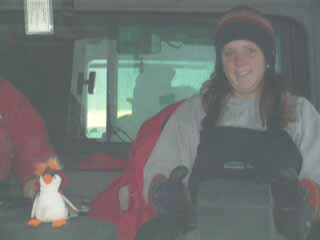
Anne driving us in the Piston Bully.

One of several fish huts on the fifteen foot thick sea ice.

The hole in the ice needs to be chipped away. The plastic tube blows warm air to keep the hole melted.

Ice crystals form like rock candy in the cold salt water.
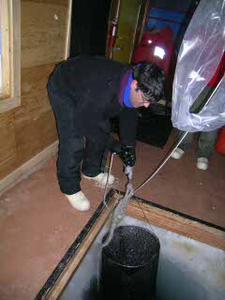
Me pulling up a trap.
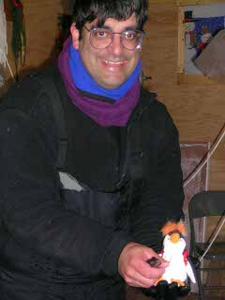
Me and a doomed fish.

A closeup of our catch.
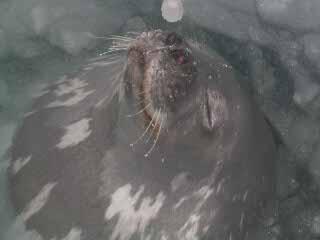
Exhausted from the dive or maybe just happy to have found air.
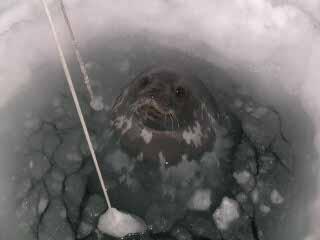
Our surprise visitor, a Weddell seal.

Look at the seal's nose now as compared to the last picture.
Contact the TEA in the field at
.
If you cannot connect through your browser, copy the
TEA's e-mail address in the "To:" line of
your favorite e-mail package.
|
